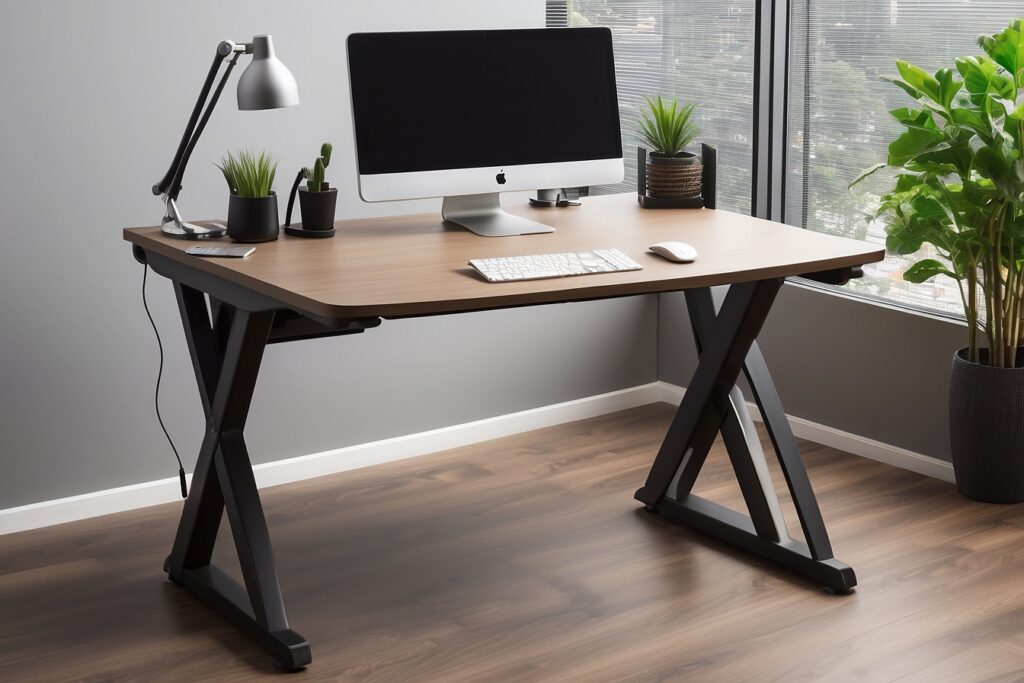Are you one of the millions of people who spend hours hunched over a desk, working on a computer, or studying for extended periods? If so, you’re likely no stranger to the aches and pains that can develop over time, particularly in your shoulders. Shoulder pain is a common complaint in today’s digital age, and it’s often a result of poor ergonomic desk setups. But don’t worry, there’s a solution! In this comprehensive guide, we will explore the world of ergonomic desk setups and how they can help alleviate and prevent shoulder pain. We will delve into the importance of ergonomics, the components of an ideal desk setup, and practical tips to optimize your workspace. So, let’s get started on your journey towards a more comfortable and pain-free work environment.
The Importance of Ergonomics
What Are Ergonomics?
Ergonomics is the science of creating a workspace to meet the worker’s demands and capabilities. It aims to improve efficiency, comfort, and safety in the workplace. An ergonomic desk setup, therefore, ensures that your work environment is customized to minimize the risk of discomfort and injury, especially when it comes to shoulder pain.
The Link Between Ergonomics and Shoulder Pain
Many office-related injuries, including shoulder pain, are a direct result of poor ergonomics. When your desk setup is not well-designed, it can lead to awkward postures, repetitive strain, and muscle imbalances. Over time, these issues can result in chronic shoulder pain. It’s essential to understand how an ergonomic desk setup can address these concerns.
- Proper Posture: An ergonomic desk setup encourages proper posture, which is critical in preventing shoulder pain. When your spine is aligned, your shoulders are in a more natural, relaxed position.
- Reduced Strain: Ergonomic setups aim to minimize muscle strain. When your muscles are less tense and overworked, you are less likely to experience shoulder pain.
- Better Blood Circulation: Improved ergonomics can enhance blood circulation, which aids in muscle recovery and reduces the likelihood of shoulder pain.
Now that we’ve established the importance of ergonomics, let’s delve into the key components of an ergonomic desk setup to combat shoulder pain effectively.
Key Components of an Ergonomic Desk Setup
1. Desk and Chair
Your desk and chair are the foundation of your ergonomic workspace. When choosing these components, consider the following:

- Desk Height: Your desk should allow your forearms to be parallel to the floor while typing, with your feet flat on the ground. If your desk is too high or too low, it can strain your shoulders and neck.
- Chair: Opt for an adjustable chair that provides lumbar support and allows you to sit with your feet flat on the ground. Armrests should be adjustable to keep your shoulders relaxed.
2. Monitor Placement
Proper monitor placement is crucial in maintaining a neutral neck and shoulder position. Follow these guidelines:

- Eye Level: Make sure your display is at eye level so you don’t have to crane your head up or down. This prevents neck and shoulder strain.
- Distance: Position your monitor about an arm’s length away to reduce eye strain and the need to reach forward.
3. Keyboard and Mouse
The keyboard and mouse are where you interact most with your computer. Ensure they are positioned correctly:

- Keyboard Height: The keyboard should be at a height that allows your arms to rest comfortably with your elbows at a 90-degree angle, reducing shoulder strain.
- Mouse: Place the mouse within easy reach, so you don’t overextend your arm. Use a mouse pad with cushioning to support your wrist.
4. Lighting
Inadequate lighting can lead to poor posture and eye strain. Ensure your workspace is well-lit, with the light source coming from behind or beside you to reduce glare on the screen. This can prevent you from hunching over and straining your shoulders to see the screen.
5. Accessories
Consider the following ergonomic accessories to enhance your desk setup:

- Ergonomic Chair Cushion: If your chair lacks proper padding, a cushion can help support your lower back and reduce shoulder discomfort.
- Document Holder: If you frequently reference documents, use a document holder that places them at eye level, reducing the need to constantly look down or turn your head.
Now that we’ve covered the key components of an ergonomic desk setup, let’s move on to practical tips to optimize your workspace and alleviate shoulder pain effectively.
Practical Tips to Reduce Shoulder Pain:
1. Frequent Breaks
One of the most effective ways to prevent shoulder pain is to take regular breaks. Sitting for prolonged periods can lead to muscle tension and discomfort. Set a timer to remind yourself to stand up, stretch, and walk around every hour.
2. Stretching Exercises
Incorporate simple shoulder and neck stretching exercises into your daily routine. These can help relieve tension and prevent stiffness. Here are a few examples:
- Neck Tilt: Slowly tilt your head to the left and right, holding each position for a few seconds.
- Shoulder Rolls: Roll your shoulders forward and backward to relieve tension.
- Arm Circles: Extend your arms and make slow circles with your wrists to keep your shoulder joints flexible.
3. Proper Phone Usage
If you frequently use your phone for work, consider using a headset or speakerphone to avoid holding your phone between your shoulder and ear. This might cause discomfort and strain.
4. Ergonomic Accessories
Invest in ergonomic accessories such as an adjustable monitor stand, an articulating keyboard tray, or an ergonomic chair if your current setup lacks these features.
5. Stay Hydrated
Staying hydrated is essential for maintaining healthy muscles and preventing tension. Aim to drink enough water throughout the day to keep your muscles functioning optimally.
Frequently Asked Questions
Q1. Can an ergonomic desk setup really alleviate shoulder pain?
Yes, an ergonomic desk setup can significantly alleviate and even prevent shoulder pain. By optimizing your workspace to promote proper posture and reduce muscle strain, you can reduce the risk of shoulder discomfort.
Q2. How do I choose the right ergonomic chair?
When selecting an ergonomic chair, ensure it is adjustable, provides lumbar support, and has adjustable armrests. Your feet should be flat on the ground, and your back should be well-supported.
Q3. What are the most common mistakes people make in their desk setups that lead to shoulder pain?
The most common mistakes include using a desk or chair that is not adjustable, having the monitor at the wrong height, and using a keyboard that forces your arms into an uncomfortable position.
Q4. How often should I take breaks during my workday to prevent shoulder pain?
It’s recommended to take short breaks every hour to stretch, walk around, and relax your shoulder muscles. These breaks can go a long way in preventing shoulder pain.
Q5. Are there specific ergonomic accessories you recommend for a desk setup to combat shoulder pain?
Some valuable accessories include an adjustable monitor stand, an articulating keyboard tray, an ergonomic chair with lumbar support, and an ergonomic chair cushion. These can greatly enhance your comfort and reduce shoulder strain.
Conclusion
In conclusion, an ergonomic desk setup is a crucial factor in preventing and alleviating shoulder pain. By understanding the principles of ergonomics and implementing the key components and practical tips outlined in this guide, you can create a comfortable and pain-free workspace. Remember to prioritize your health and well-being by investing in an ergonomic setup that suits your needs and preferences. Your shoulders will thank you, and you’ll enjoy a more productive and enjoyable work experience.







